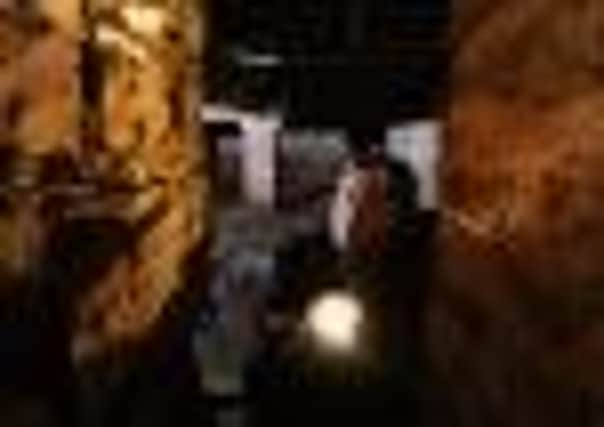Video: Secret underground world beneath York’s Guildhall


But many of the Grade I listed building’s most fascinating features are now hidden from public view as the passing of time has shifted the focus away from the corridors of power that still remain there.
Hopes are high, however, that the Guildhall will once again return to the epicentre of the city after York Council announced ambitious plans to relocate its services and breathe new life into the ancient building.
Advertisement
Hide AdAdvertisement
Hide AdBeneath the Guildhall sits what was once one of York’s main thoroughfares, Common Hall Lane, which remained a public right of way up until 1884 when it was sealed off after the city’s main Post Office was built.


The route had once been deemed so important that a decision was taken 400 years earlier to preserve the road below the Guildhall, when it was re-built after an earlier incarnation had fallen into disrepair.
Hidden behind oak panelling in the building’s Committee Room One are two secret passages, with one leading to a staircase climbing up to another meeting room. The other leads to a spiral staircase that winds its way up on to the Guildhall’s roof to provide stunning views of the city’s skyline.
The Guildhall has featured in some of the city’s most famous events, including the trial of Margaret Clitheroe, a Catholic martyr who later became a Saint after she was executed for her beliefs on March 25, 1586.
Advertisement
Hide AdAdvertisement
Hide AdThe official ceremonies to appoint the city’s Lord Mayors have taken place since the 13th century under the arching roof of the main Guildhall, which is 93ft long, 43ft wide and almost 30ft high.
And the hall continues to be used as both a venue for feasts and performances – although none quite rowdy as a production by a troupe of Shakespearean actors who were banned owing to the antics of the audience.
Below the Guildhall is a network of rooms that were once cellars and had never been opened up to the media before until the Yorkshire Post was granted a tour yesterday with the Guildhall’s manager, Richard Pollitt.
Mr Pollitt, who is also responsible for the Lord Mayor’s official residence, the Mansion House, said the council’s move out of the Guildhall represents a watershed in the building’s long history.
Advertisement
Hide AdAdvertisement
Hide AdMr Pollitt, who started working for the council 15 years ago as one of the Lord Mayor’s drivers, said: “There is a huge potential for the building, not only for financial opportunities for the council, but also for the people of York and visitors to the city.
“This represents one of the most important episodes in the Guildhall’s history, and what happens from here will be a key chapter for a building that has been very much part of the history of the city since the 13th century.”
The future of the Guildhall has an added significance as the city marks the 800th anniversary this year since being handed a Royal Charter by King John in 1212.
While the proposals to relocate the authority’s services to a new multi-million pound headquarters have sparked fears that centuries of civic history could be lost forever, the move is seen as vital to securing the Guildhall’s future.
Advertisement
Hide AdAdvertisement
Hide AdThe council, which has stressed it will keep the ownership of the Guildhall, is looking to recruit an outside organisation or trust to oversee the running of the site.
Coun Julie Gunnell, the council’s cabinet member for corporate services, said: “The Guildhall complex is such an amazing asset for the city, but it really is not being used to its full potential. This is not a case of the council washing its hands of the Guildhall. We want to do quite the opposite – to bring it back into far greater use and make sure it is held in the same regard as it was back in the medieval period.”
While the Guildhall remains an enduring reminder of life throughout the medieval era, much of the current building had to be rebuilt after it was damaged during a German bombing raid on the night of April 26, 1942.
It is hoped that the efforts to bring the Guildhall back into wider use will mirror the success that the council has had in broadening the appeal of the Mansion House. The Lord Mayor’s official residence was opened up to the public six years ago, and has since been hired out for events including marriages and golden weddings.
Events attracted more than 4,000 visitors between February and December last year – an increase of more than a third.